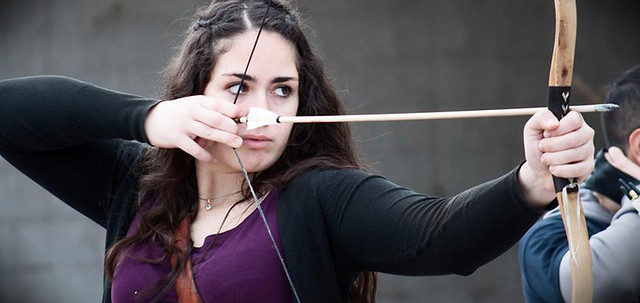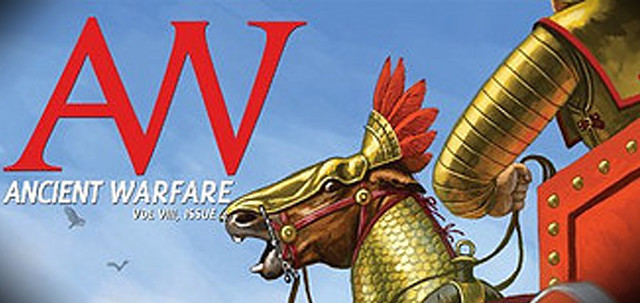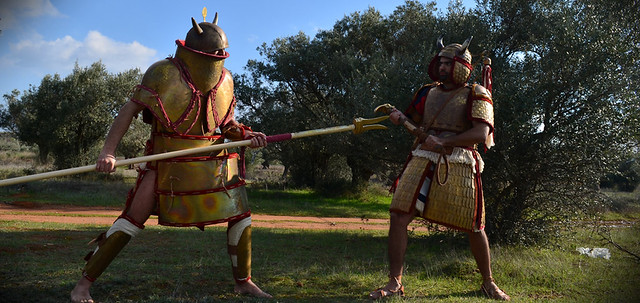The Association of Historical Studies “KORYVANTES” gave a worthy representation of Greek Experimental Archaeology in the International Experimental Archaeology Conference of the EXARC Organization on12th of April 2013, that was held in Denmark, in the conference centre of the Lejre Archaeological Park, outside Copenhagen in during 12th and 13th of April 2013. The Lejre Archaeological Park is one of the most important international Living history and Scientific study places that bring to life moments of ancient Danish history though reconstructed Iron Age and Viking Era settlements.
 |
| Photo of the Participants, in front of the Conference Centre of the Lejre Archaeological Park. |
The international Organization EXARC represents most of the well known open air Archaeological Museums and Experimental Archaeology Parks of the Globe and it’s under the Auspice of ICOM. EXARC by promoting the cooperation of organizations and academic institutions, and also through conferences and publications, enhances the level of modern Experimental Archaeology. With members from more than 25 countries, offers a powerful support network through which archaeologists and archaeology lovers participate in an exchange of knowledge, experiences and best practices.
In the context of these EXARC activities is the organization of a conference on the subject of the "History Experimental Archaeology" , that it was a reference point for the year 2013 for the audience and the experts in this field. Every conference participant presented in an extensive way the historical linage of Experimental Archaeology applications in his country, through specific examples and reports, analyzing the trends that prevailed and the opportunities presenting themselves for the future.
Our Association’s lecture was titled «Τhe developmental steps of Experimental Archaeology in Greece, through key historical replicative experiments and reconstructions», and included all the known reports of Experimental Archaeology that have taken place in Greece from the 19th century till now.
The 40 minute lecture was opened by Mr. Nikos Kleisiaris, introducing to the delegates the first applications of Living History that took place in our country from the 19th century, with the re establishment of the Olympic Games till the middle of 1920s with the Delphic games by Angelos Sikelianos. Then followed an introduction in the first steps of Experimental Archaeology with a detailed description of the Ioannis Sakkas experiments in the 1970s with the reconstructed Mirrors of Archimedes. This was followed by presenting the “Keryneia II”, a fully reconstructed commercial vessel of the Hellenistic Era. The lecture continued with many other reconstructions such as “Papyrela”, a Neolithic Era ship and the reconstructed mechanisms of Heron and Antikythera.
Mr. Spyros Bakas initially analyzed two well known experiments of Naval Experimental Archaeology that had been successful in our Country-the case of “Argo” a reconstructed ship of the 14th century BC and the trireme “Olympias”, the reconstructed Classical Period ship. Emphasis was given in the Technical details of these two important experiments, pointing out the high technical standards and the demands of the scientific groups that undertook the reconstruction.
Mr. Bakas speech also presented an extensive report of the Experimental Archaeology approach of the Association “KORYVANTES” from 2008 till today. The reconstruction of linothorax from our Association was extensively presented as the first structured experiment of war technology reconstruction in our country the last years. The interest was focused on the presentations and the experiments that supported the reconstructed armors of our Association like the one inspired from the Medinet Habu monument and the reconstructed “Dendra Armor”.
Finally the activities of our Association in the application of Experimental Archaeology on the battle tactics and the research on the way of fighting of the Hoplite Phalanx as well as the precious conclusions that have been drawn from this study.
 |
| Mr Spyros Bakas during his lecture describing the Experimental Reconstruction of the Late Bronze Age "Medinet Habu" Armour , made by Association KORYVANTES". |
The conferences was graces with the presence of a large number of Academics like professor Martin Bell from Reading University (England), Ian Dennis from University of Cardiff (Wales), researcher Martin Applet from Denmark National museum, professor Viire Pajuste from University of Tartu (Estonia), as well as distinguished personalities from the International field of Experimental Archaeology like the EXAR representative Jeroen Flamman.
Its worth noting that following the Conference there will be a printed EXARC paper for which our Association will have the honor to sent its work. The presence and active participation of our Association in presentations of this level not only increases our recognition but confirms also its position as an active and dynamic carrier of research and civilization
We warmly thank the executives of the EXARC Mr. Roeland Paardercooper and Mrs Jodi Reeves Flores for their kind invitation and welcome of our mission
We also warmly thank the Lejre Museum director Mr. Lars Holten for the kind accommodation.
We do thank Mrs Christy Emilio Ioannidou for her valuable contribution and help on the presentation of the naval experimental archaeology projects.
We do thank Mrs Christy Emilio Ioannidou for her valuable contribution and help on the presentation of the naval experimental archaeology projects.
 |
| Sagnlandet Lejre (ie. Land of Legends Lejre) is an open-air park with reconstructions of ancient living environments, like the Iron Age village, the Stone Age camp, the Viking market, the 19th century-farm cottages in the 43 hectares of Sagnlandet land |
 |
| Mr Spyros Bakas , the directors of the EXARC Conference Dr Roeland Paadercooper και Dr Jodi Reeves, the Director of the Lejre Museum Dr Lars Holten ,and Mr Nikos Kleisiaris |
 |
| Professor Martin Bell of the University of Reading (England) and Mr Dragos Gheorgiou of the National University of Arts (Romania) on the right. |
 |
| With Dr Jeroen Flamman, one of the Directors of ΕΧΑR Organization ( European association for the advancement of archaeology by experiment http://www.exar.org) , in the Nautical Museum of Roskilde. |
 |
| With the Director of Lejre Museum Dr Lars Holten inspecting a reconstruction of a Stone Age pottery. |
 |
| A momment of the Conference |
 |
| Reconstructed ship from the Viking Culture Era in the Nautical Museum of Roskilde near the Archaeological Park of Lejre. The total 4 reconstructes ships of the era which are exhibited in the museum, gave archaeologists valuable information on the research of the Viking's marine technology. |
 |
| Reconstructed Bronze Age Armours made for Experimental Archaeology Projects ,by the Association of Historical Studies KORYVANTES, presented in the EXARC International Academic Conference |






.jpg)




